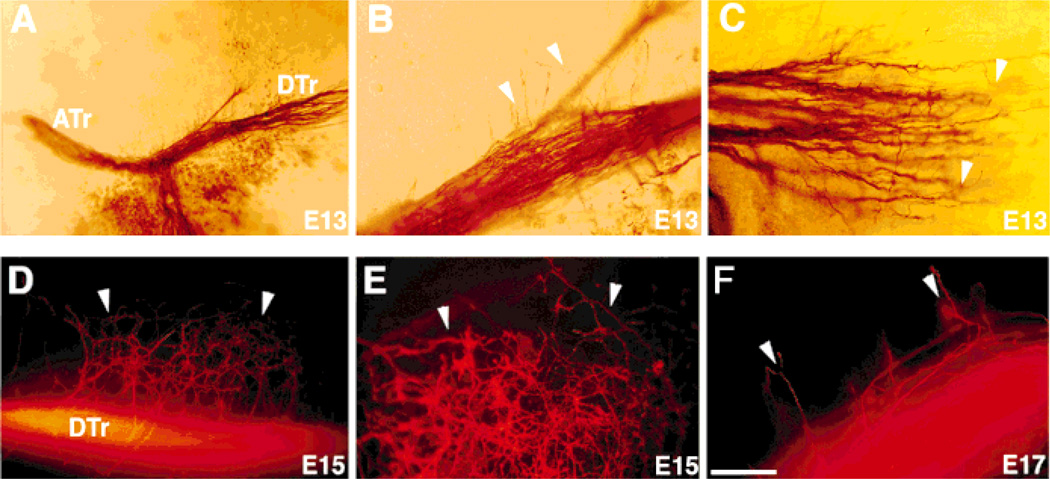Fig. 5.
Arbor-inducing effects of neurotrophin-3 (NT-3) at embryonic day (E)13 and E15. Collateral inducing effects of NT-3 (arrowheads) can be seen as early as E13, the initial phase of trigeminal tract formation (A–C). B is the high magnification view of descending trigeminal tract shown in A. In some of the cultures from E13, defasciculation of central trigeminal arbors in the descending tract was also apparent (C). 1,1′-dioctadecyl-3,3,3′,3′-tetramethylindocarbocyanine perchloratn (DiI)-labeled central trigeminal axons from an E15 wholemount culture of brainstem explant with intact trigeminal ganglion (TG; D), and a higher-power view of dense collaterals and arbors is shown in E. Central trigeminal axons begin their collateralization (arrowheads) at E17 during normal development in vivo (F). For abbreviations, see list. Scale bar = 100 µm in B,C,E,F; 200 µm in D; 300 µm in A.

